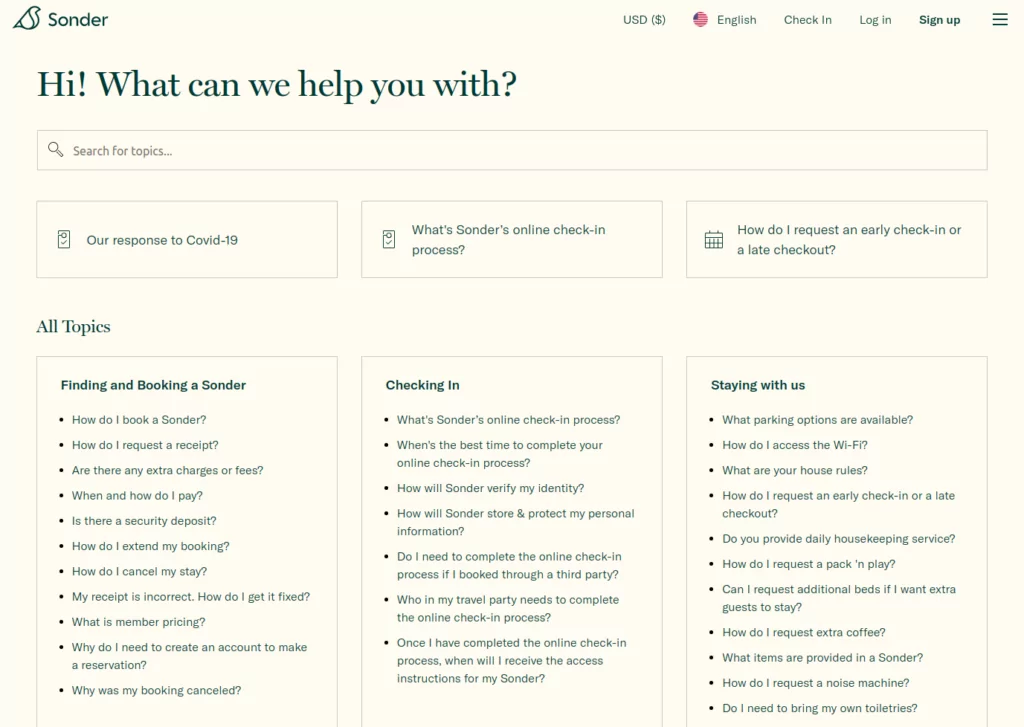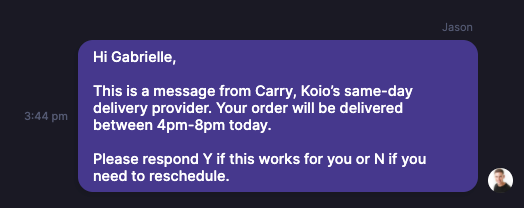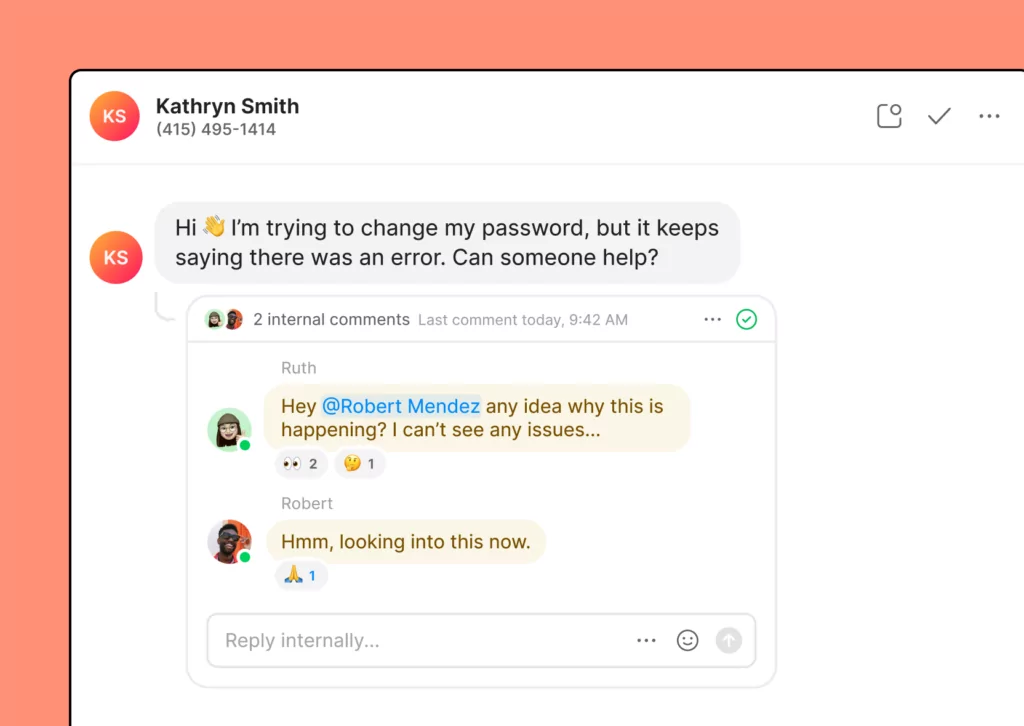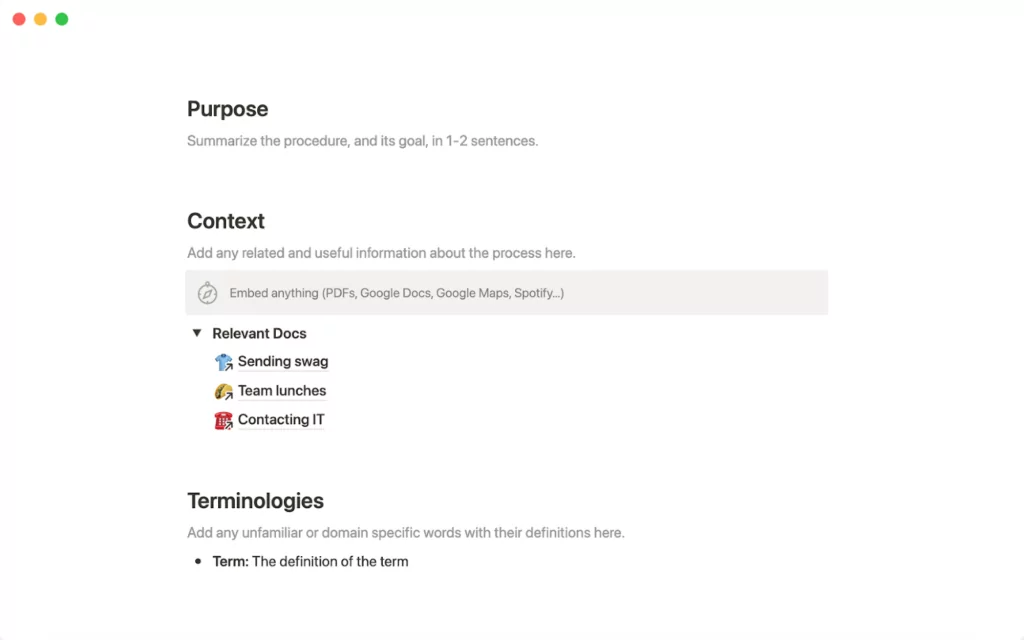Customer experience took center stage as expectations drastically shifted. In today’s world, where the competition is fierce, being good enough — is not enough. Modern brands need to exceed consumers’ expectations and bake proactive customer service into their customer relations strategy.
According to Salesforce, 62% of customers expect companies to anticipate their needs. Just answering customer support calls won’t help you stand out among competitors. Here’s the tricky part: customers constantly reset their expectations to match their best omnichannel experiences. Once exposed to an outstanding customer experience, their bar goes higher.
Now businesses are grappling with the question of how to offer more proactive customer service and cater to customers’ needs even before customers ring the bell. In this article, we’ll look at the signs that you need to shift your approach to customers, the benefits of proactive customer support, and the steps you can take to deliver more proactive service today.
What is proactive customer service?
Proactive customer service means anticipating customers’ needs to improve the overall experience and/or resolving customer issues before they become points of friction.
Unlike the traditional approach to customer service, where businesses only react once they receive a complaint, proactive customer service is all about actively looking for opportunities to deliver a delightful customer experience. Here are some examples of proactive customer support:
- Offering customers new products based on their previous purchasing history
- Alerting customers of mistakes or issues and offering a solution
- Reaching out to clients based on a milestone they’ve hit
9 steps to deliver proactive customer support
Successful businesses have one thing in common: they are one step ahead in anticipating customers’ needs. If you want to adopt this approach for your business, here are nine ways to deliver proactive customer service.
1. Build out your self-service content
For many businesses, self-service content is the most overlooked — or at the very least not fully explored channel to support their customers. Data from NICE shows 81% of consumers expect more self-help options. While every customer has unique needs, there are some common issues and complaints that come up in a customer journey.
Your job is to map out the most common customer questions and problems that appear and create helpful resources to tackle them proactively. Having the answers ready even before customers are aware of them will decrease the number of support calls and improves the overall experience.
When it comes to the format, keep in mind that people have different learning styles (most notably visual, auditory, reading/writing, and hands-on). You may want to add videos or even an interactive demo to get your customers to the right information. The content type you land on should also factor in context. For example, providing an FAQ with short, to-the-point written answers and videos for more complex tutorials.
Don’t forget that this is not a one-and-done thing. You need to update your resource library frequently while testing different formats to see what works best for your customers.
Sonder is a hospitality business that manages short-term rentals, such as apartment hotels, in North America, Europe, and Dubai. The company has a detailed help center where they answer the most common questions. Customers can easily look for answers by category or using the search bar.

2. Offer to continue conversations over text
Customers prefer text messages more than email communication. According to Podium, 90% of consumers choose to interact with a brand via text message. Moreover, text messages have an estimated 98% open rate, while email sits at 20% or nearly five times less.
This is no surprise — texting can feel more personal than email, which is why it’s a powerful form of proactive customer service.
“Getting on a texting basis with your customers is really the key to relationship building,” said Ryan Quindlen, Customer Success & Experience at Laudable. “If you made a new friend at a bar, would you give them your email address or would you give them your phone number? Right? And that’s the experience that we want to create for our customers,” said Ryan.
64% of consumers want brands to connect with them. On social media or during a specific customer interaction, they don’t want to feel like just a number. They want to be part of real, authentic interactions with the brands they seek out and feel a human-to-human connection with the people who are part of that larger entity. The next step below provides a few ways you can provide more personalized experiences at scale (that go beyond just using a customer’s first name).
3. Create ‘aha’ moments for your customers
The moment when a customer buys your product or signs a contract is not when everything ends — that’s just the beginning. As customer acquisition costs skyrocketed, businesses came to a realization that they needed to invest more effort in customer retention.
Research has shown that improving retention by just 5% can drive profits up by over 25%. If you are looking for ways to proactively impress customers and increase their customer lifetime value, leverage the power of upsells.
Despite the common belief that upsells take too much time and effort, you can automate this process based on previous product usage. So if a customer uses a certain product or a service, you can recommend a complementary product.
If you have a digital product or online store, another way to act proactively is to send a text message when customers abandon shopping carts. The cart abandonment text message can help you recover lost sales and show customers you care.
Businesses can also sprinkle in delight by reaching out to customers based on a milestone they’ve hit. For example, Guaranteed Rate sends a happy anniversary text to customers after one year of home ownership.
4. Regularly ask for feedback to let your team course correct
Most businesses wait for customers to reach out before they take action and solve the problem. Unfortunately, that’s too late. In today’s world, these poor experiences can quickly translate to negative chatter across social media, negative online reviews, and more.
As you know preventing negative word-of-mouth is a must in today’s online-first world. Invesp reports 86% of users will think twice about buying from a company with negative reviews. To avoid this from happening, you have to proactively ask your customers for feedback.
Whether that’s after a support ticket you’ve solved or a customer call you just had, make sure to get feedback to keep a pulse on your customers’ needs and improve the buyer journey.
Here’s one simple example that can help you gather the necessary customer feedback via a text message:
Hi [name]. This is [your name] from [company name]. Thanks again for speaking with me today. I wanted to see if you have any other questions or concerns. If not, I’ll go ahead and close this ticket. To opt out of future SMS messages, respond STOP.
Copy to Clipboard
5. Automate any customer scheduling
Trying to get ahold of customers to schedule and confirm appointments can easily turn into playing phone tag. That’s why for businesses that need to schedule time in advance to serve their customers, you should have automated text messaging in place.
With appointment confirmation texts, you can avoid missed appointments and avoid creating bottlenecks in your day-to-day work. You can also use text templates when sending reminder texts to reduce no-shows.
Carry is a same-day delivery solution for e-commerce. The company offers fast delivery while providing a seamless experience for both clients and end customers. To deliver five-star customer service, Carry uses automated texts to proactively confirm a delivery window. This saves the company two hours per day.
“I can’t overemphasize enough how important it is that we can automate that first initial message in a personalized way. Customers love receiving SMS confirmation the moment they check out,” says Jason Ovryn, Co-founder at Carry.

Let’s say you frequently get appointment scheduling requests over the phone and want to optimize processes to reduce the number of support calls. You can also set up an auto-reply message containing your calendar link to let customers easily schedule. This way, you can free up some time, and customers can select the appointment date that works best for them — a win-win.
6. Build triage systems that reduce your team’s reactive customer service
Noticing some red flags and acting right away is another way to prevent reactive customer service management. Putting a triage system in place that requires your team to act whenever you spot emerging issues can reduce the number of customer calls you’ll receive.
Tools can also help you gather specific information based on a customer’s question. For example, OpenPhone uses the Cohere widget so that if someone reports an issue on our platform, we proactively ask for information automatically before they interact with a rep to get the information our team needs with less back-and-forth communication.
“All of those specific details that we find sometimes just get left out, and we end up having to ask for it,” says Drew Schuffenhauer, Customer Support Team Lead at OpenPhone. This approach has given our customer service department the control and visibility they need to provide the best customer experience possible while scaling efficiently.

After the preliminary assessment of the issue, businesses that use an advanced phone system can assign conversations to teammates for following up through internal threads. This allows any team to comment internally on any messages, calls, and call recordings and create action items for colleagues. As a result, you can collaborate with your team to proactively solve customer issues and escalate conversations as needed.
7. Keep your team accountable for providing proactive customer support
Offering proactive service requires support to your team — the ones who are down in the trenches with customers day in and day out. Your job is to provide necessary resources and best practices they can use to understand what proactive customer support means and have clear expectations on their scope of support.

Use Notion’s SOP template as a springboard for creating your team’s SOP doc
When you’re building out a Standard Operating Procedure (SOP) and best practice docs for your team, don’t overlook customer service call recordings. You can repurpose call recordings for knowledge sharing. These recordings can also be part of onboarding new support agents on the team. Businesses also use call recordings to allow for seamless collaboration where one agent can take over a client and get up to speed by going through the calls.
With these resources in place, you can easily point back to them any time you need to coach teammates.
8. Be transparent when your team makes a mistake
Mistakes are part of life (and business) — how you handle them makes all the difference. Here’s where proactive customer service can put you ahead of the competition.
Informing customers about an issue even before they are aware of it can help you build trust. No one wants to hear about a delayed delivery. However, customers appreciate when brands are honest and upfront about it.
This is not where your job finishes. After informing customers of the potential issue, businesses need to find ways to make it up to customers—like sharing what changes your team plans to make to prevent an issue from occurring again or offering a discount or a refund.
9. Use technology to improve customer experience
As you’ve seen, customer experience has changed quite a bit over the last few years. And as this experience has changed, so too has the technology required to facilitate it. Today customers have a strong preference for calling or texting with businesses over other methods. As a result, to stay on top of customer interactions, businesses need a phone solution.
A modern phone system allows you to grow your business by eliminating busywork, spotting trends with powerful analytics, and coaching team calls and conversations. Paired with a proactive customer service approach, you can exceed your customer’s high standards and build long-lasting relationships.
Ryna is an apartment rental marketplace powered by technology on a mission to deliver a seamless rental experience and a sense of community. The company was looking for support tools to eliminate bottlenecks in its sales cycle. Once they implemented OpenPhone, their calls, texts, and follow-ups were just a click away.
“Our business has really improved because as a startup, we’re always looking to refine processes and make ourselves more competitive. And to do that, we need to rely on the data analytics OpenPhone provides,” said KD Dao, Co-Founder & COO at Ryna.
On top of this, the seamless integration with their Hubspot CRM allows them to track conversion rates and sales cycle lengths effortlessly. The result: happy customers.
4 clear signs of reactive customer service
Sometimes businesses are overwhelmed with day-to-day tasks, so they can’t see the forest for the trees. And while you think your customers are happy because you solved their support request, they can feel frustrated because of the lost time and your reactive service, which can easily lead to churn.
In today’s world of instant gratification and sky-high customer expectations, businesses that respond promptly and accurately win. But how can you spot the warning signs that your team is operating far too reactively? To help you identify whether you have reactive customer service, we compiled some of the most common telltale signs:
- You have no prioritization guardrails in place for responding to customers
- Seeing a preview of your social media notifications gives you a sense of dread
- Reviewing past conversations, you can see multiple contacts to resolve a basic issue
- Your team’s knowledge base is out of date
If some of these signs sound familiar, it’s time to transform your customer experience with a proactive customer service strategy.
5 benefits of proactive customer service
Businesses that adopt proactive customer support practices as part of their support strategy can instantly spot improved efficiency, productivity, and customer satisfaction. In case you need to get buy-in from key stakeholders at your company, let’s look at some of the essential benefits of proactive customer service:
- Improve customer satisfaction: Proactively addressing customer pain points shows that you care. Whenever you anticipate customers’ needs or issues they are facing, you create a positive experience that ultimately impacts customers’ satisfaction.
- Boost sales: From abandoned carts to upsells, proactive customer support helps you recover lost sales or get new customers by spotting the right opportunities to boost sales. Data from Baymard shows around 7 in 10 people abandon their cart during checkout. Not trying to recover at least some of them with proactive calls and texts is like leaving money on the table.
- Build customer loyalty: According to Salesforce, 94% of consumers say a positive customer service experience encourages them to continue buying from the same brand. Businesses that create personalized experiences across touchpoints and address customer concerns upfront are building the foundation for a long-lasting customer relationship.
- Reduce the need for support calls: Solving requests before they become bigger customer problems reduces the need for support, decreasing the pressure from your support team, and freeing up more time for proactive customer service.
- Collect customer feedback in real-time: Having a system in place to collect feedback regularly can become a gold mine for any business. Feedback can help you detect weak points in your customer journey. Plus, feedback equips you with the right insights to make data-driven decisions and identify emerging trends.
Once you have proactive customer service, create a second life of defense
While proactive strategies outlined can help you drive better impressions and experiences for your customers, you’ll likely still run into irate or difficult customers. Give your team the resources they needed to turn around tough conversations by checking out our de-escalation techniques for customer service guide.
